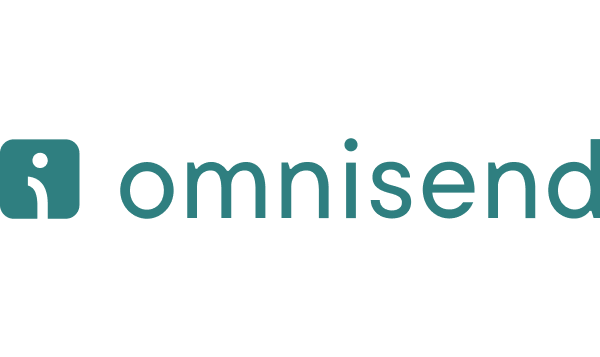- Premium features included
- No hidden costs or usage limits
- Scale from startup to enterprise



Finding the perfect email marketing platform can feel like searching for a needle in a haystack. With your business growth on the line, you need a tool that fits your budget and helps you connect with customers effectively — whether you’re just sending basic campaigns or building complex customer journeys.
I’ve spent countless hours testing both Omnisend and Mailchimp with clients across different industries, and I’ve noticed they serve distinctly different needs. Omnisend has carved out its niche with ecommerce-focused features, built-in SMS capabilities, and a straightforward interface that online store owners love.
Mailchimp, meanwhile, continues to dominate with its versatile toolset, extensive integration options, and flexible marketing features that work for practically any business type.
Let me walk you through how these platforms compare across pricing, features, and overall performance so you can make the best choice for your marketing strategy.
Omnisend
Mailchimp
Best For
Ecommerce brands, online stores
Small businesses, creators, general marketers
Pricing
Starts at $16/month (Standard Plan)
Starts at $13/month (Essentials Plan)
Ease of Use
Beginner-friendly, ecommerce-focused
Intuitive interface, wide use case support
Value for Money
Great for ecommerce automation & SMS included
Flexible toolset for general email marketing
Omnisend
Mailchimp
Strengths
Weaknesses
Omnisend
Mailchimp
Email Campaigns
Automation
Landing Pages & Forms
Segmentation & Personalization
Reporting & Analytics
Integrations
I’ve found Omnisend to be a breath of fresh air for online store owners tired of cobbling together multiple tools. It excels at multi-channel marketing, letting you manage email, SMS, and push notifications from one platform.
What really impressed me was how seamlessly it integrates with platforms like Shopify and WooCommerce — the product pickers and automated cart recovery workflows just work out of the box. That said, if you’re not selling products online, much of Omnisend’s specialized toolkit might feel unnecessary for your needs.
After years of working with clients across industries, I still find Mailchimp to be one of the most adaptable email platforms out there. Its clean interface, flexible audience management, and massive integration ecosystem make it suitable for practically any marketing scenario.
While the automation tools pack a punch, you’ll need to upgrade to access their full potential. Mailchimp doesn’t include SMS functionality like Omnisend does, but its superior analytics, content personalization options, and scalability make it the go-to choice for businesses running diverse email campaigns or managing complex audience segments.
Subscriber Count
Omnisend Pricing (Standard Plan)
Mailchimp Pricing (Essentials Plan)
Key Differences
1,000
$20/month
$13/month
Mailchimp cheaper; Omnisend includes SMS & push notifications.
2,500
$35/month
$39/month
Similar pricing; Omnisend offers built-in multi-channel automation.
5,000
$65/month
$65/month
Pricing equalizes; Omnisend stronger for ecommerce automations.
10,000
$115/month
$100/month
Mailchimp slightly cheaper; Omnisend includes SMS credits.
25,000
$240/month
$270/month
Omnisend more affordable at scale; Mailchimp better for general use cases.
In my experience working with dozens of online stores, Omnisend’s pricing sweet spot is for ecommerce businesses that want email, SMS, and push notifications without juggling multiple platforms. The built-in SMS credits add real value, and the pricing scales pretty reasonably as your list grows.
Mailchimp starts out cheaper for small lists (a big plus for startups), but the costs climb more steeply with larger subscriber counts. You’re paying for its flexibility and extensive integration options, but remember — SMS messaging isn’t included and requires separate purchase.
If you’re running an online store, Omnisend probably offers better value, while Mailchimp makes more sense for businesses with varied marketing needs across different industries.
Omnisend Free Plan
Mailchimp Free Plan
Subscribers
Up to 250 subscribers
Up to 500 subscribers
Emails/Month
500 emails/month
1,000 emails/month
Automation
Email-only automation
Basic pre-built Customer Journeys
Landing Pages/Forms
Sign-up forms & pop-ups
Landing pages, pop-ups, and embedded forms
Branding
Omnisend branding included
Mailchimp branding included
I’ve set up Omnisend’s free plan for several small ecommerce startups, and while it’s limited to just 500 emails/month and 250 subscribers, it gives you enough access to test the platform’s ecommerce-specific features before committing. The product-focused tools make it particularly valuable for small online stores just getting started.
Mailchimp’s free offering is more generous with double the subscriber limit and email capacity, plus access to its landing page builder and simple automation flows. However, I’ve found that clients quickly hit the ceiling when they need A/B testing or more complex automation sequences.
For ecommerce businesses specifically, Omnisend delivers more relevant features even on its free tier, while Mailchimp offers more breathing room for general email marketing as you build your list.
Omnisend
Mailchimp
After implementing Omnisend for several ecommerce clients, I’ve become a big fan of its purpose-built approach. The platform shines with its multi-channel capabilities — letting you manage email, SMS, and push notifications without jumping between different tools.
The pre-built workflows for cart recovery and order updates have genuinely boosted sales for my clients, and the platform just “gets” what online stores need. That said, I wouldn’t recommend it for brands outside ecommerce — you’d be paying for specialized features you simply won’t use.
I’ve been setting up Mailchimp campaigns for over a decade, and it remains impressively versatile across industries. Its intuitive interface, rich template library, and comprehensive reporting make it suitable for practically any email marketing scenario.
While it doesn’t include SMS or push messaging like Omnisend does, it excels in audience management, basic automation, and content optimization. The main drawbacks?
Pricing climbs steeply with list growth, and businesses wanting truly integrated multi-channel campaigns might find its approach a bit disjointed compared to Omnisend’s all-in-one solution.
When I talk to Omnisend users, they consistently praise how quickly they can get campaigns up and running. The platform’s intuitive setup is particularly appreciated by ecommerce users who don’t want to spend days configuring their email marketing.
Many of my clients love the pre-built automation workflows that let online stores implement complex sequences with minimal customization.
Mailchimp also gets high marks for usability, with its clean dashboard and accessible email editor making it approachable for beginners and experienced marketers alike. The interface feels a bit more general-purpose, which works well for businesses running diverse campaign types.
I’ve found that most ecommerce users can get comfortable with Omnisend in just a few hours, especially if they’re already familiar with platforms like Shopify or WooCommerce. The drag-and-drop builder and straightforward automation setup make the learning process remarkably painless.
Mailchimp starts simple enough, but introduces a steeper learning curve once you dive into advanced features like Customer Journeys, complex segmentation, or multi-step automation. This is particularly true for users on lower-tier plans who might hit feature limitations that interrupt their workflow.
When I talk to Omnisend users, they consistently highlight three things: the multi-channel marketing capabilities, the built-in SMS functionality, and the responsive customer support. Small business owners frequently mention how effectively it drives ecommerce sales without requiring complex technical setup.
Mailchimp users, meanwhile, typically praise its reliability, comprehensive reporting tools, and flexibility across different industries. However, I often hear complaints about rising costs as lists grow and frustration that features like SMS or transactional emails aren’t integrated more seamlessly into the core platform.
